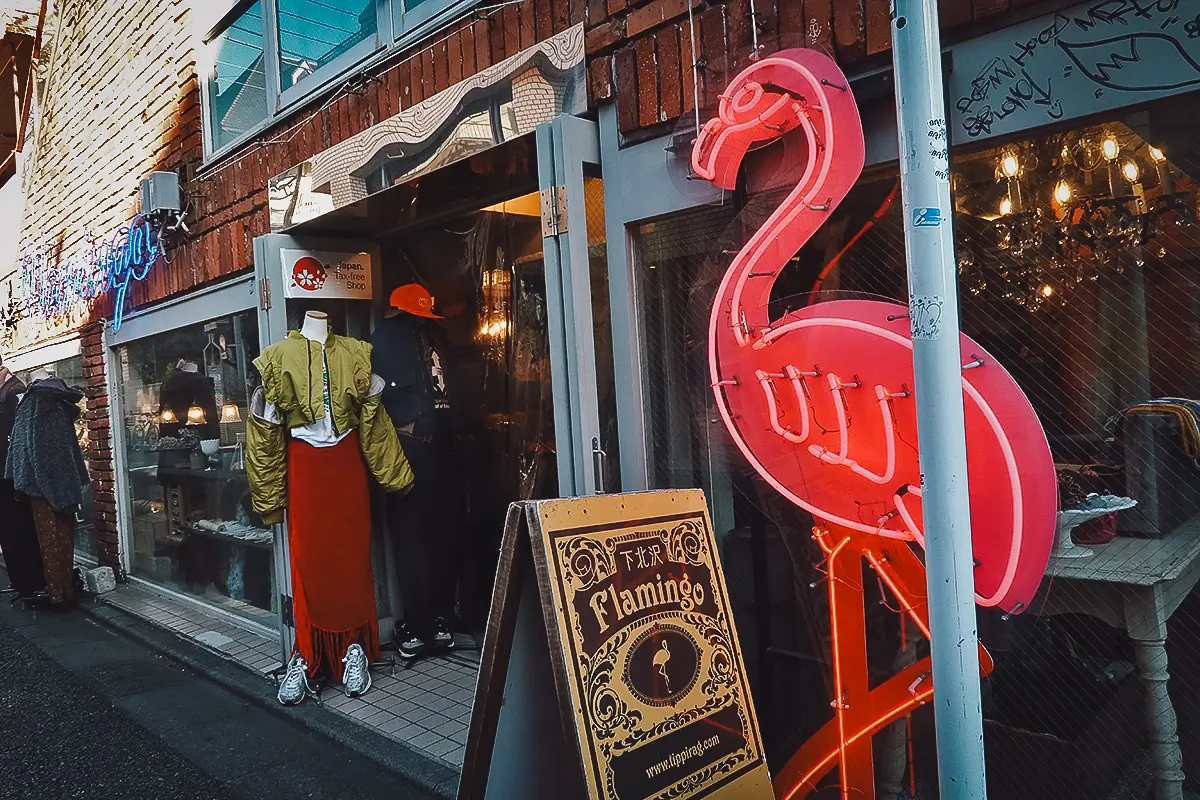SUMMARY HIGHLIGHTS
- If vintage is your thing, then be sure to explore Shimokitazawa and Koenji.
- Nakameguro is a great neighborhood to visit during cherry blossom season. It’s also where you’ll find the Tokyo Starbucks Reserve.
- If you have an interest in rare first editions and vintage manga, then Jimbocho Book Town is for you.
When visiting any new destination for the first time, going to a city’s top tourist attractions is a given. It’s something most people need to do.
But do you know what I enjoy more than snapping a few photos at overcrowded temples and shrines in Japan? Visiting its neighborhoods. Exploring a cool neighborhood and wondering what daily life must be like is far more intriguing to me than taking the same photo you’ve seen hundreds of times on Instagram.
With its 23 wards, 26 cities, 5 towns, and 8 villages, the Greater Tokyo Area is home to dozens of interesting neighborhoods. You’ve probably heard of well-traveled areas like Shinjuku and Shibuya, but what about less-trodden neighborhoods like Jiyugaoka and Jimbocho Book Town?
In this article, we’ll go off the more beaten path and get lost in cool Tokyo neighborhoods that first-time visitors may not be as familiar with.
EXPLORE TOKYO QUICK LINKS
To help you make the most of your time in Tokyo, I’ve put together links to top-rated hotels, tours, and other travel-related services here.
HOTELS
Top-rated hotels in Shinjuku, one of the most convenient areas to stay for first-time visitors to Tokyo.
- Luxury: Kimpton Shinjuku Tokyo, an IHG Hotel
- Midrange: Ken Hotel Tokyo Shinjuku
- Budget: Akasaka Guesthouse HIVE
EXPERIENCES
- Sightseeing Tour: Asakusa Cultural Walk & Matcha Making Tour
- Kimono Rental: Asakusa Kimono Rental & Photography
- Food Tour: Wagyu Beef & Sake Paring Foodie Tour in Ginza
- Cultural Experience: Learn Kintsugi and Breathe New Life Into Broken Pottery
- Market Tour: Tsukiji Fish Market Walking Food Tour in Tokyo
- Cooking Class: Cooking Classes in Tokyo
OTHER SERVICES
- Travel Insurance
- Airport Transfers: Narita Airport | Haneda Airport
- Tokyo Subway Ticket
- Japan Rail Pass
- Japan eSIM
THE COOLEST NEIGHBORHOODS YOU MAY NOT KNOW ABOUT IN TOKYO
Shimokitazawa
I love Shimokitazawa. Often called “Shimokita” by locals, this trendy Setagaya neighborhood located just a few minutes west of Shinjuku and Shibuya has a bohemian charm unlike any other neighborhood in Tokyo.
I used to live in San Francisco in the 90s and Shimokitazawa has a similar vibe to the Haight Ashbury area (minus the pot-smoking hippies). Based on what I’ve read, it was originally a farming community but today, it’s become a hub for Tokyo’s creative scene. Its narrow alleyways are filled with vintage shops, independent boutiques, music stores, and quirky restaurants and cafes, creating an atmosphere that feels both nostalgic and new.
Thanks to its farming origins (evidence for which is still visible today), Shimokitazawa has a laid-back vibe, making it an ideal place to lose track of time and wander at your own pace. Whether you’re hunting for vintage finds or just soaking up the artsy energy, Shimokitazawa is a great place to visit for people looking for a different side of Tokyo.
Shikmokitazawa is fun to explore on your own, if you have the time. If not, then you may be interested in this vintage shopping tour.
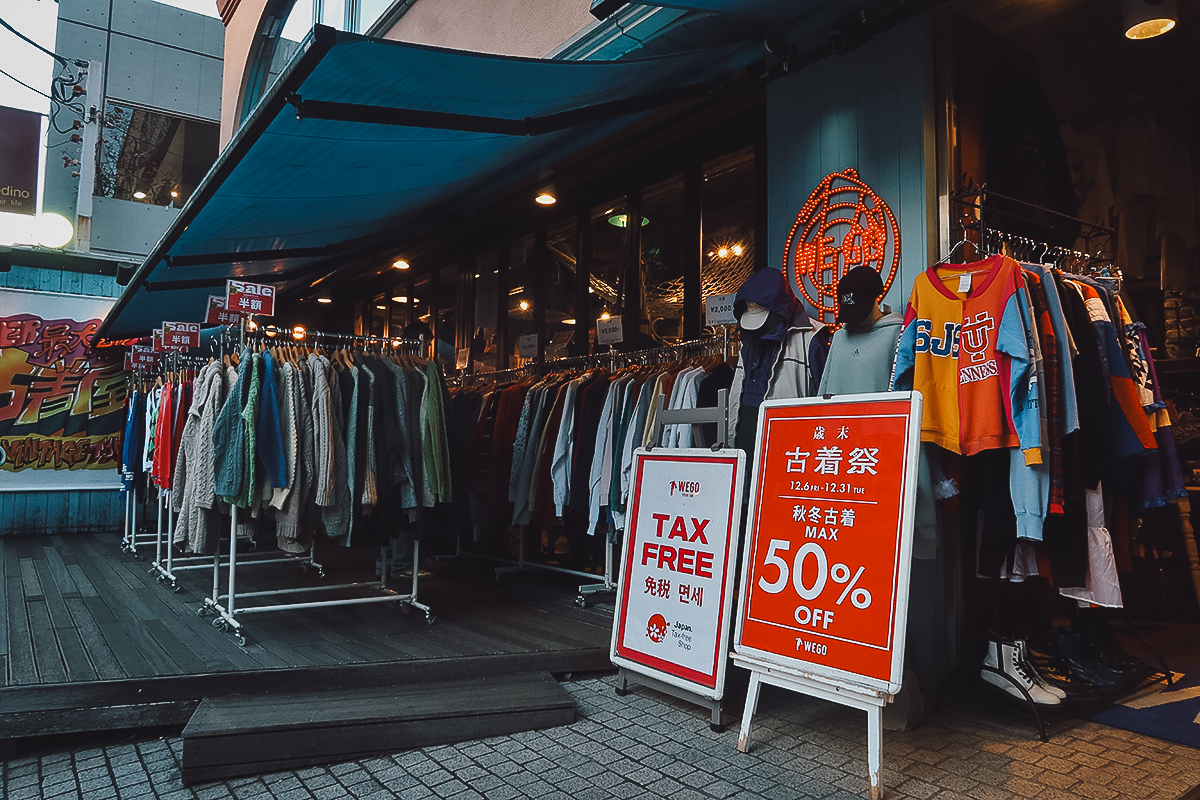
Tomigaya
The quiet, up-and-coming neighborhood of Tomigaya made it to TimeOut’s 2023 list of the world’s coolest neighborhoods. It’s located just fifteen minutes on foot from Hachiko and the famed Shibuya crossing, but you’d never know it from its slower pace and more relaxed atmosphere.
I found myself in Tomigaya after my coffee-obsessed niece asked for a bag of Ethiopian single-origin from Fuglen (pictured below), a Norwegian coffee house that morphs into a cocktail bar at night. According to TimeOut, it’s a favorite of international magazine Monocle, whose Tokyo office can be found right here in Tomigaya.
Located just west of Yoyogi Park, this quiet neighborhood is home to dozens of trendy cafes, modern restaurants, and stylish boutiques. It’s an understated yet trendy area that offers a peaceful getaway from the frenetic chaos of Shibuya.
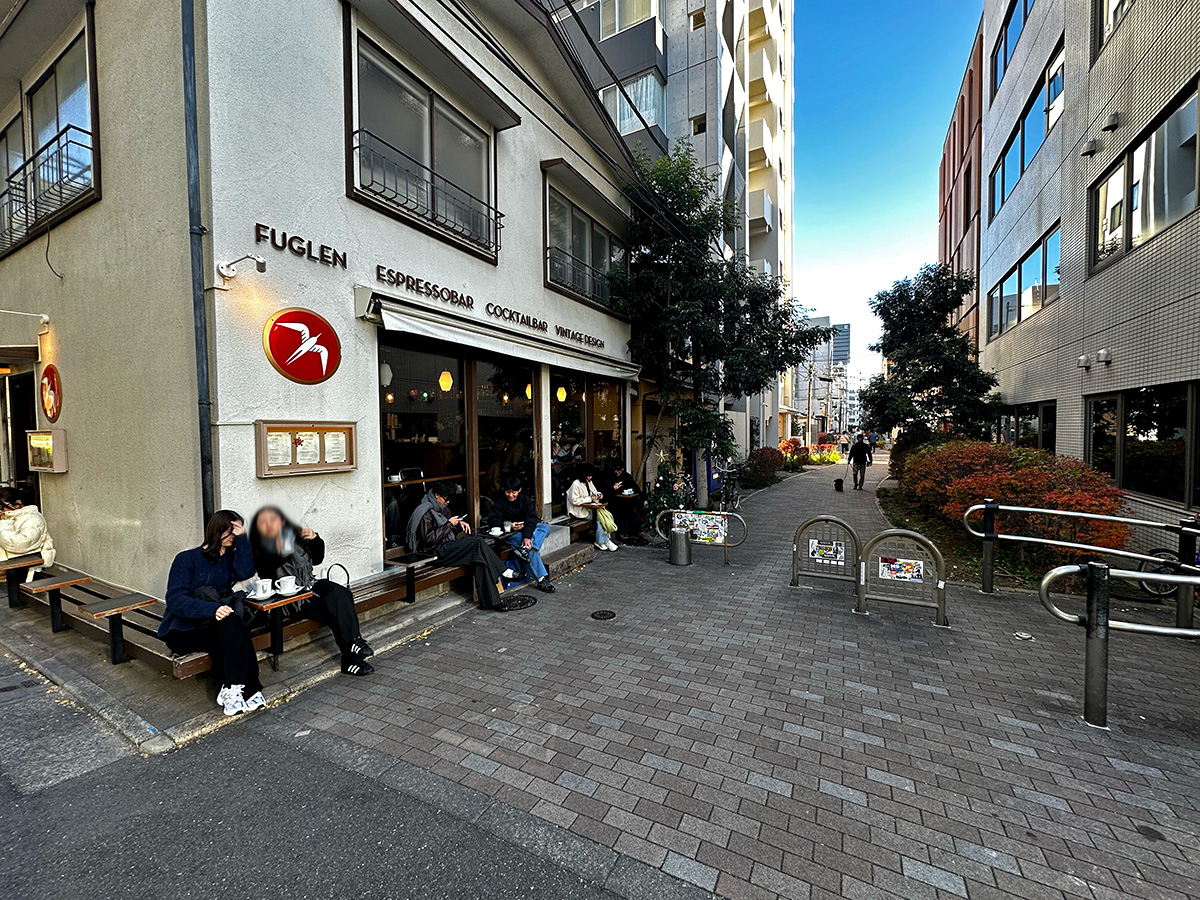
Sangenjaya
Often called “Sancha” by locals, Sangenjaya is a laid-back neighborhood just a few stops west of Shibuya. It refers to the residential area immediately surrounding Sangenjaya Station. Look up after exiting the station and you’ll see the Carrot Tower, an orange-hued building that’s become a distinctive landmark of Sangenjaya.
Like Kichijoji and Jiyugaoka, Sangenjaya is often mentioned as one of the most desirable places to live in Tokyo. It doesn’t feel as modern as some of the other places on this list, but that may not be a bad thing. The area is known for its cozy izakayas, retro coffee shops, and tiny bars that give the neighborhood a nostalgic feel.
Speaking of izakayas, seek out Sankaku Chitai, a traditional yokocho near Sangenjaya Station. If you prefer tea, then Tokyo Saryo – a modern tea salon that puts a contemporary spin of the traditional tea ceremony – is a good place to visit.
For a sight you don’t see everyday, look for the giant gorilla looming over a Family Mart. Located about a 10-minute walk from Sangenjaya Station, it’s been there so long even residents don’t remember why it’s there in the first place.
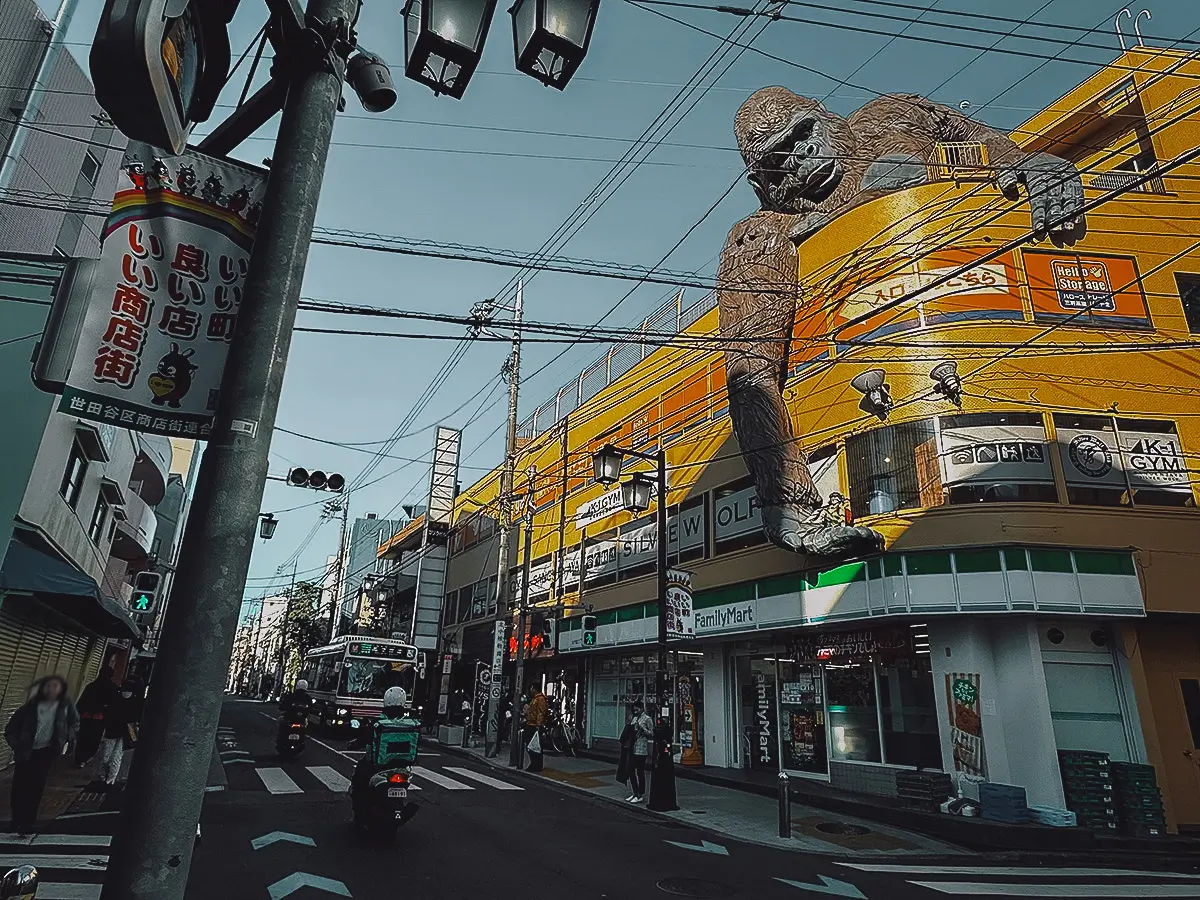
Nakameguro
Nakameguro is one of Tokyo’s most stylish and picturesque neighborhoods, especially in the spring. An upscale neighborhood just south of Shibuya, the area is known for its rows of cherry trees running parallel to the Meguro River. Come at the right time in spring and you’ll find both sides of the river abloom with sakura blossoms.
Spring is an ideal time to visit Nakameguro but it’s a lovely area to explore at any time of the year. Take a leisurely stroll along the river and you’ll find trendy cafes, gourmet restaurants, art galleries, boutiques, and chic cocktail bars in the many small alleyways that run perpendicular to the river.
When you visit, I suggest taking the metro to Nakameguro Station and walking northwest along the river until you get to Tokyo Roastery (about 10-15 minutes). As of 2025, this mega cafe is one of just six Starbucks Reserves operating in the world.
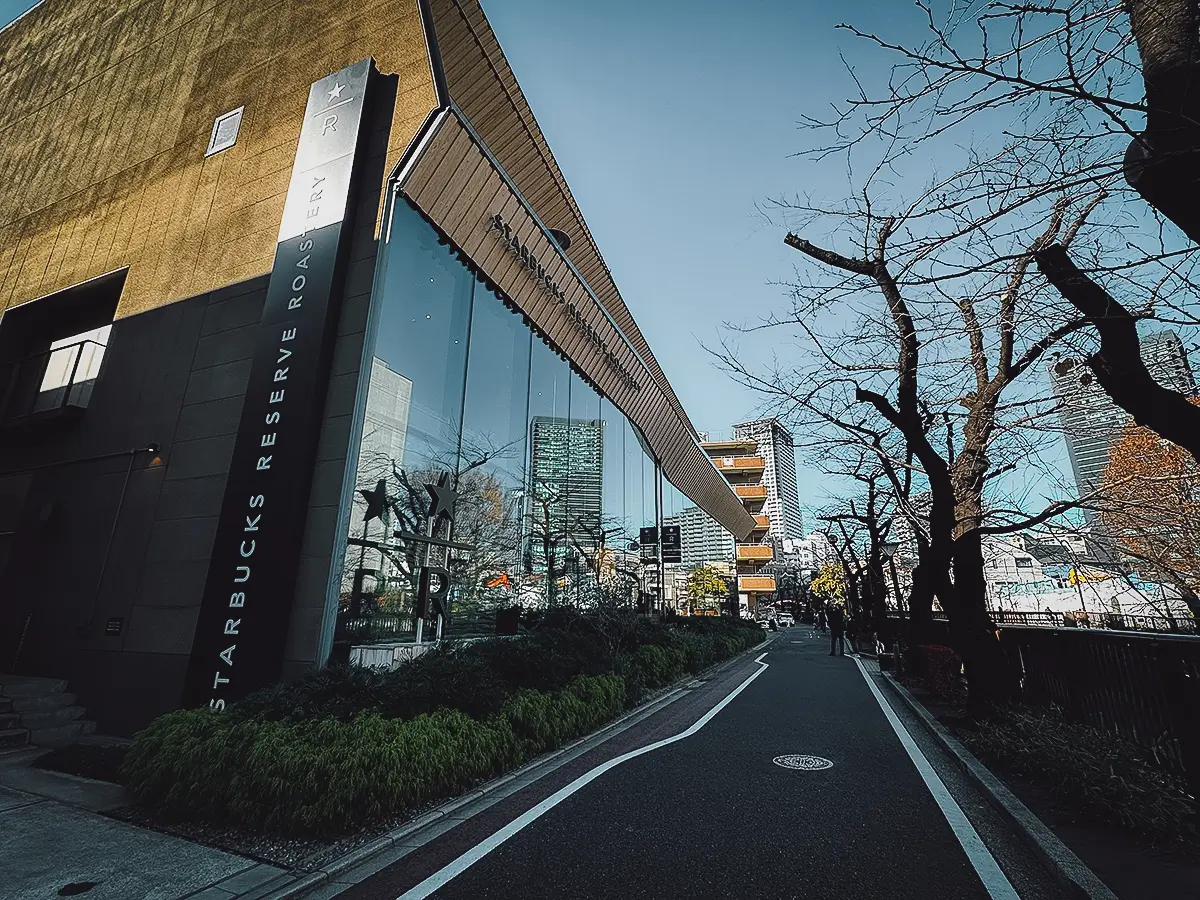
Daikanyama
If you like upscale neighborhoods, then Daikanyama is a great place to explore in Tokyo. Located just a short walk from Shibuya, this stylish neighborhood is often referred to as Tokyo’s “Little Brooklyn” (more so for its vibe than its architecture, which looks nothing like Brooklyn’s brownstones).
Known for its tree-lined streets and elegant atmosphere, Daikanyama is a haven for Tokyo’s fashion-forward and design-conscious crowd. Refined and cosmopolitan, it’s home to many stylish boutiques, trendy cafes, and upscale restaurants – its leafy surroundings making it a perfect venue for a relaxed day of shopping, dining, and people-watching.
A highlight on any trip to the area is the iconic Daikanyama T-Site, a three-building structure housing a branch of Tsutaya Books. In 2021, this beautifully-designed labyrinth of printed material was named “one of the most brilliant bookshops in the world” by the Financial Times. If you like books, then you NEED to visit this place.
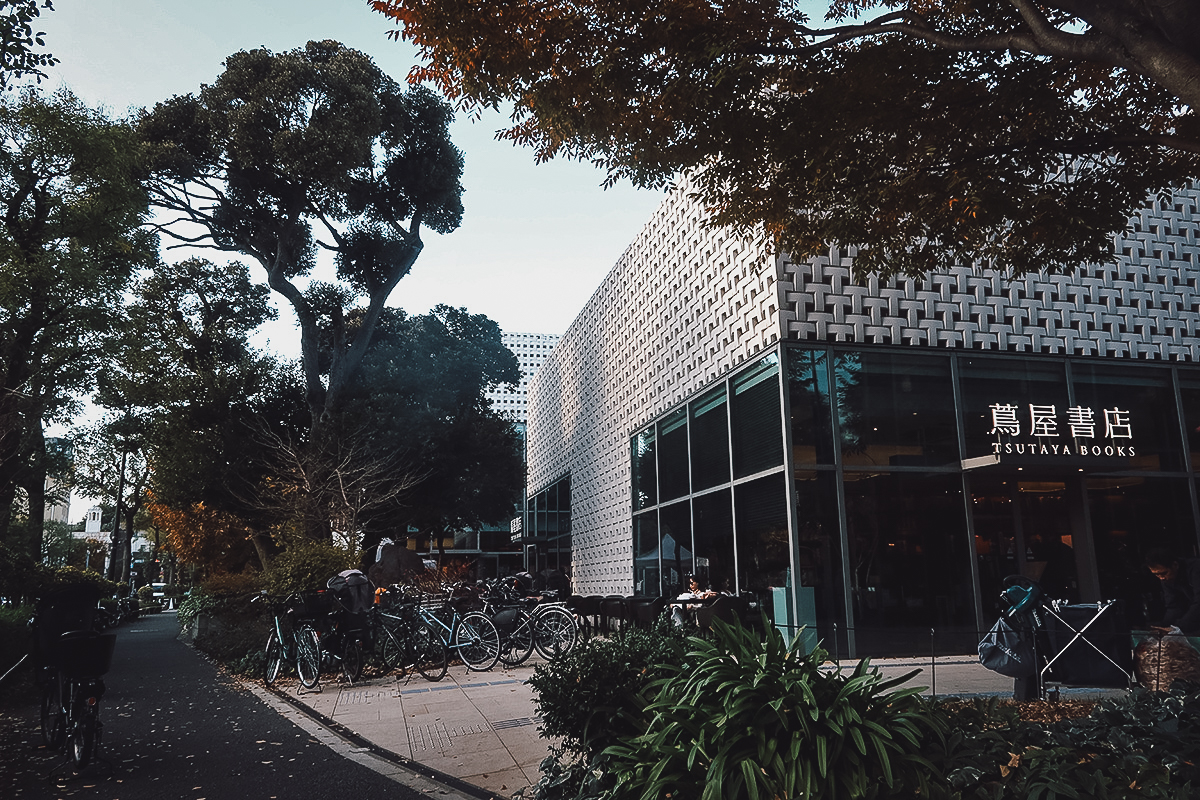
Ebisu
Ebisu is a refined and laid back neighborhood located just one stop south of Shibuya on the JR Yamanote Line. Known for its sophisticated charm, it’s a go-to destination for food lovers and offers everything from Michelin-starred restaurants to humble izakayas and trendy cafes.
At the heart of the neighborhood is Ebisu Garden Place (or Yebisu Garden Place), a large commercial complex built on the former site of a Yebisu Beer brewery. It features upscale dining, shopping, and cultural venues, not to mention Yebisu Brewery Tokyo – a small brewery and museum with exhibits on the history and science of beer brewing in Japan.
Ebisu Garden Place is the main attraction but be sure to explore the area’s side streets to find hidden eateries, boutiques, pubs, and Tokyo’s famed tachinomiya (standing bars). Ebisu Yokocho, a maze of izakayas, is another highlight.
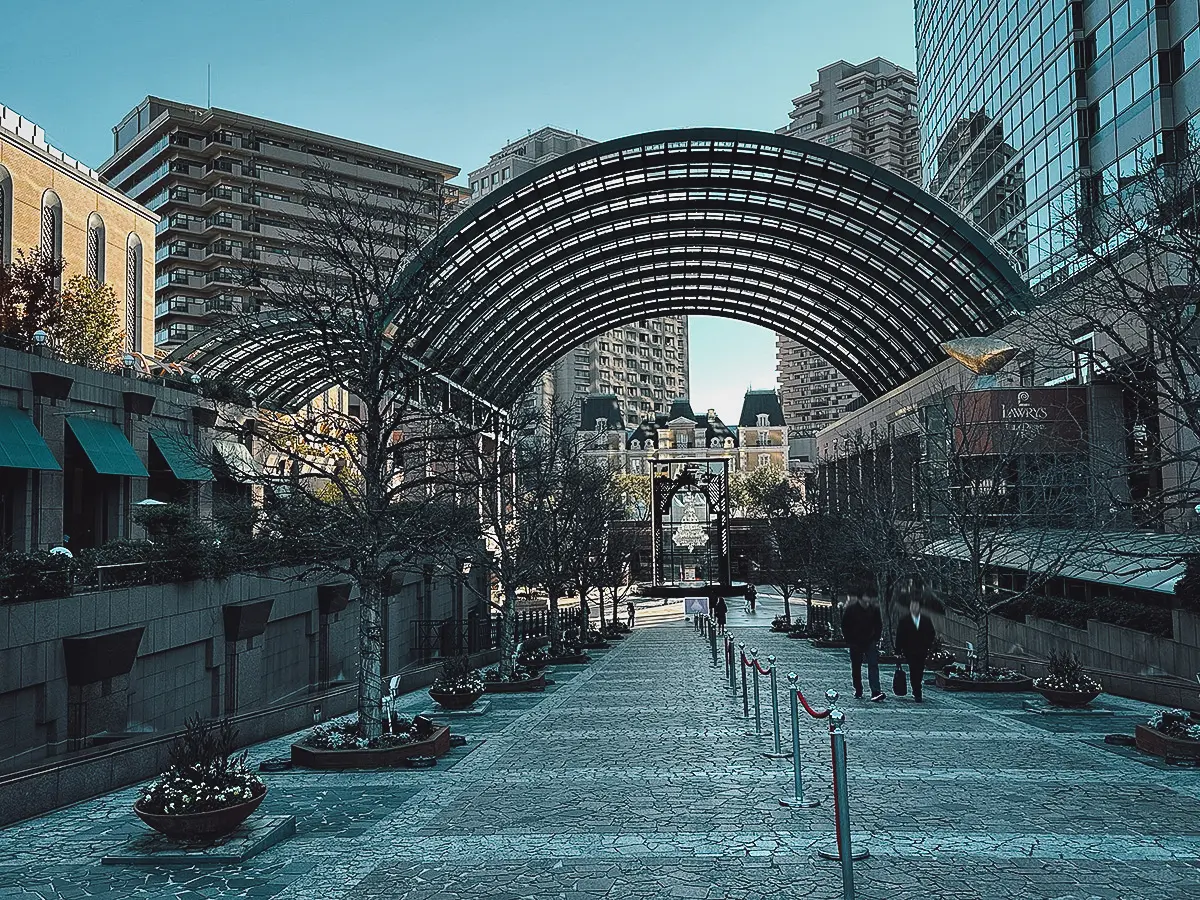
RELATED ARTICLE: Luxury Experiences in Tokyo
Hiroo
Located just north of Ebisu, Hiroo is another upscale, cosmopolitan neighborhood in central Tokyo. It’s home to a large expat community, a few embassies, and a wide range of global dining options.
Hiroo is similar in feel to Ebisu with its plethora of stylish boutiques, specialty shops, and international restaurants and cafes. Hiroo Shopping Street is a highlight, as is Arisugawa Park, a green space in the heart of Hiroo with a central pond and wooded hiking trails.
You can easily explore both Ebisu and Hiroo on the same day. If you enjoy a good walk, then I suggest making your way to Hiroo Shopping Street from Ebisu before spending a quiet hour or two at Arisugawa Park.
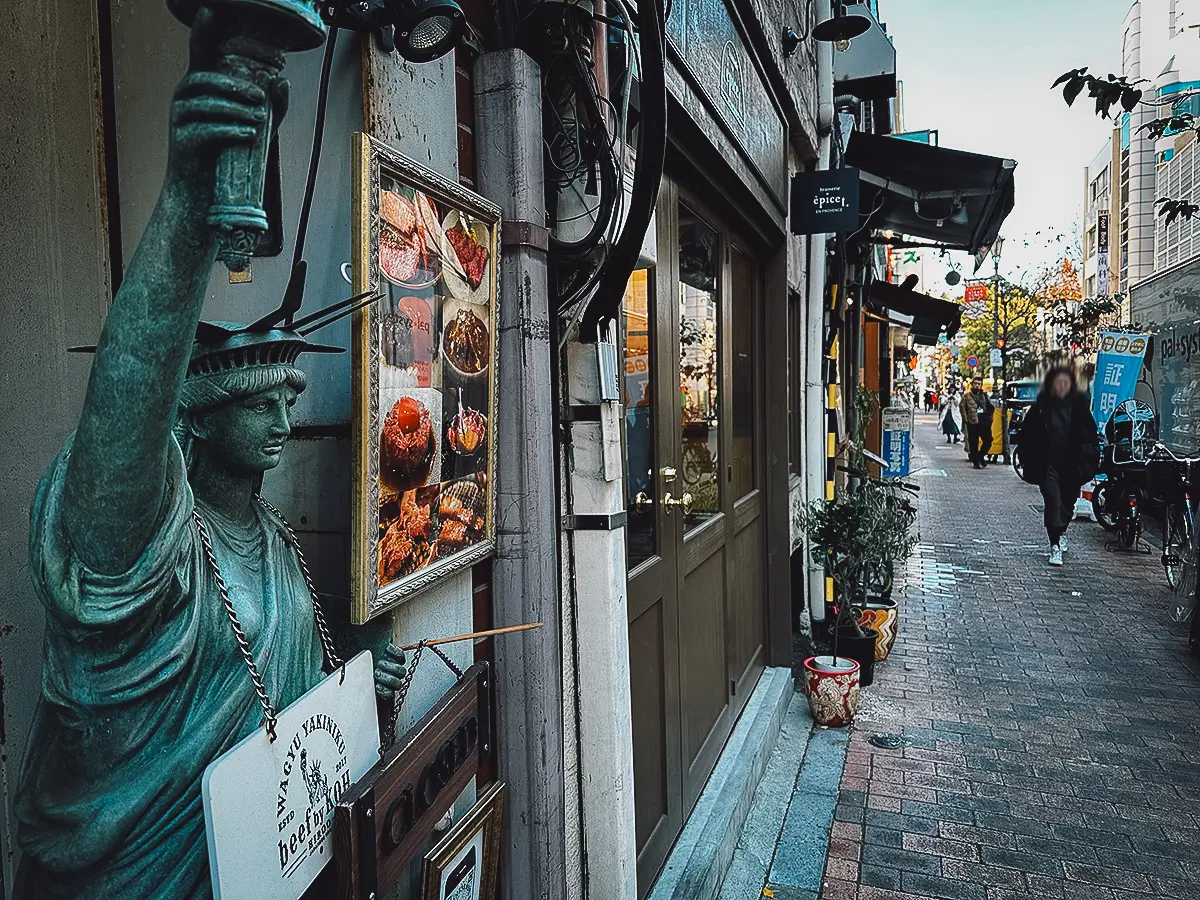
Kagurazaka
Kagurazaka is a historic neighborhood in central Tokyo that was once a bustling geisha district. Today, it’s evolved into a stylish destination for shopping and dining, as well as a vibrant center for French culture.
Much of Kagurazaka appears to have been modernized but get off the main strip and you’ll find remnants of its old world charm in its narrow side streets, traditional buildings, and centuries-old ryotei (traditional Japanese restaurants). Based on what I’ve read, a few ochayas (traditional teahouses) still operate here though they’re virtually invisible to foreigners.
Thanks to two French schools in the area, Kagurazaka is home to the largest French expat community in Tokyo, hence the nickname “Little Paris”. Walk down Kagurazaka-dori and you’ll pass several patisseries, cafes, and bistros offering a fusion of French and Japanese cuisine. It’s a lively area that offers many interesting dining and shopping opportunities.
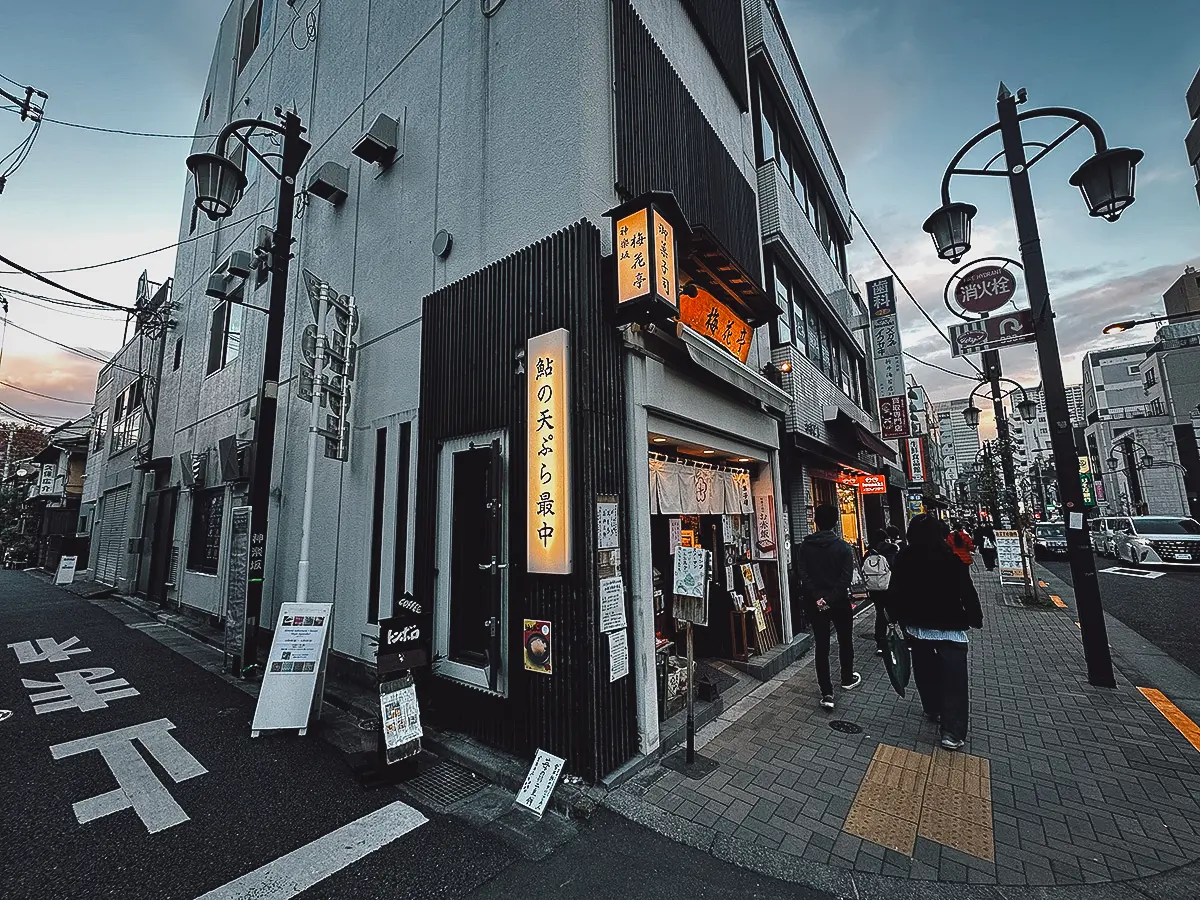
Jimbocho
As soon as you get off the train at Jimbocho Station, you get a sense that you’re about to explore one of the most unique and interesting neighborhoods in Tokyo. The station walls are covered in wallpaper that make it look like the inside of a library or bookstore.
Often referred to as “Jimbocho Book Town”, this paradise for book lovers is home to over 150 second-hand bookstores. They sell everything from rare first editions to vintage manga, academic text, old posters, and foreign-language novels.
I’ve scoured the bargain bins at Jimbocho not to look for old books, but for vintage Japanese advertising posters. Unfortunately, I haven’t found any yet, but I do enjoy exploring this part of Tokyo. Wandering its streets feels like stepping into a different era, one that feels quite different, even detached, from the rest of the city.
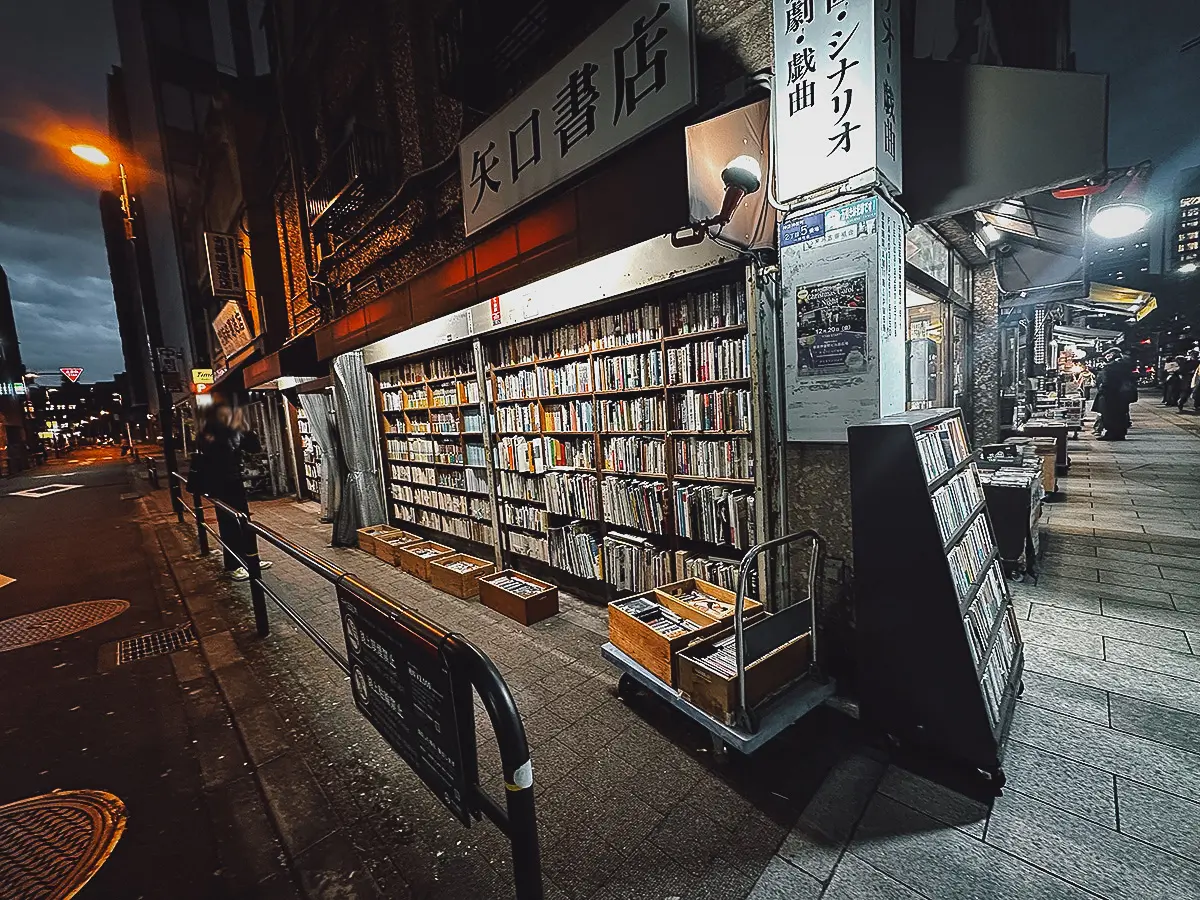
Koenji
If Shimokitazawa sounds appealing to you, then you’ll probably want to visit Koenji as well. Referred to by some as “Tokyo’s coolest neighborhood” or “Tokyo’s capital of underground cool”, Koenji is a bohemian neighborhood known for its many independent music venues, vintage clothing shops, quirky bars, and eclectic boutiques.
Located just west of Shinjuku, Koenji is known for its thriving music scene with countless live venues offering indie, punk, rock, and experimental music nightly. I haven’t been to Koenji at night so I can’t speak on that, but I do enjoy rummaging through its racks searching for good deals on clothing and vintage memorabilia.
For many locals, Koenji, and not Shimokitazawa, is the “real” capital of vintage in Tokyo. Personally, I enjoy the atmosphere of Shimokitzawa more though I may change my tune after experiencing Koenji at night.
If you find yourself in Tokyo at the end of August, then you may want to visit Koenji for the Awa Odori Festival. It’s one of Tokyo’s largest summer street festivals and features up to 12,000 dance team participants.
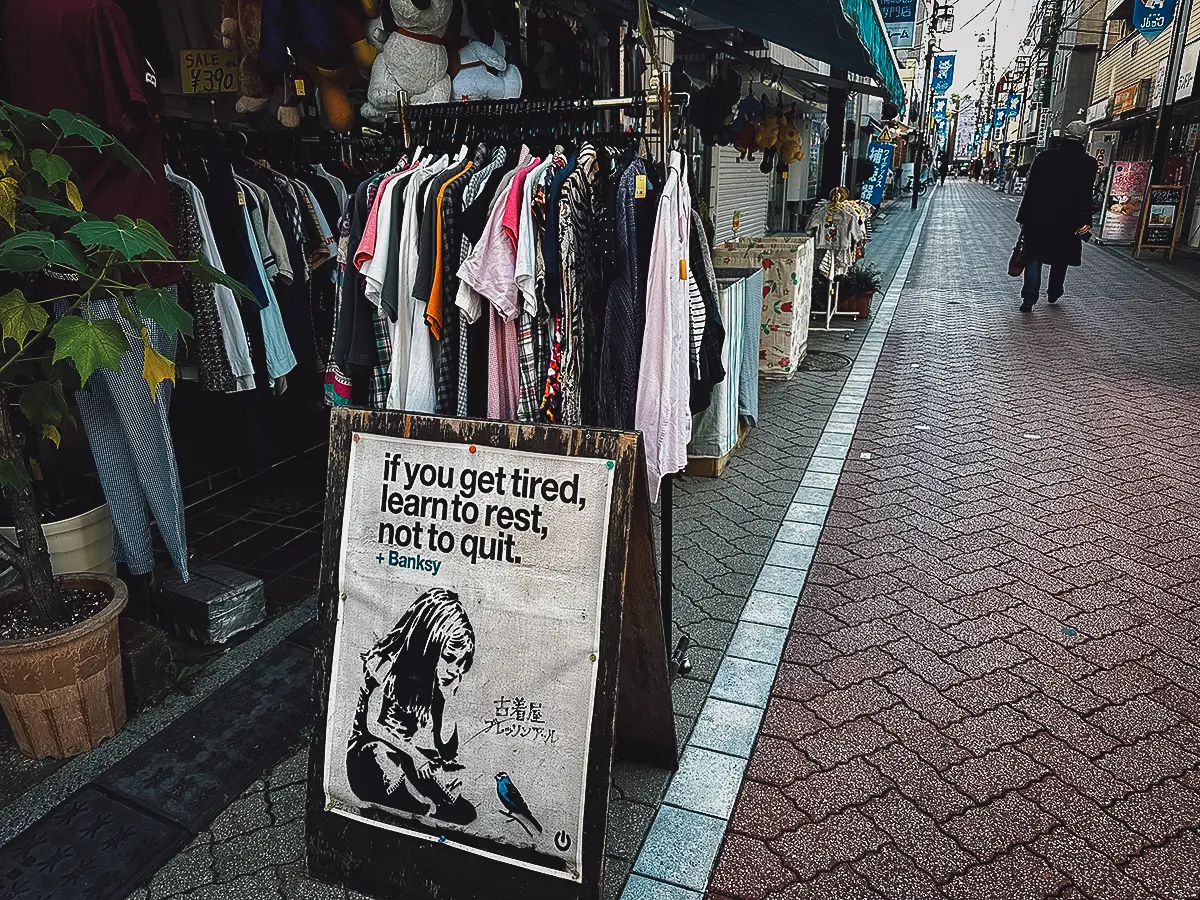
Kichijoji
Located west of Shinjuku and Koenji, Kichijoji is a lively neighborhood that’s often described as one of the most desirable places to live in Tokyo. It offers a good balance of urban convenience and natural beauty, thanks to its bustling shopping streets and easy access to Inokashira Park.
Inokashira Park is a sprawling park that’s home to a large central pond and a network of tree-lined walking trails. The park becomes especially attractive in early April when the perimeter of the lake springs to life with sakura blossoms. If you’re a fan of Studio Ghibli films, then you’ll be pleased to learn that Inokashira Park is also home to the popular Ghibli Museum.
Aside from Inokashira Park, another highlight in Kichijoji is Harmonica Yokocho. Located just outside Kichijoji Station, it’s a covered network of tiny alleyways that’s home to dozens of small shops and izakayas.
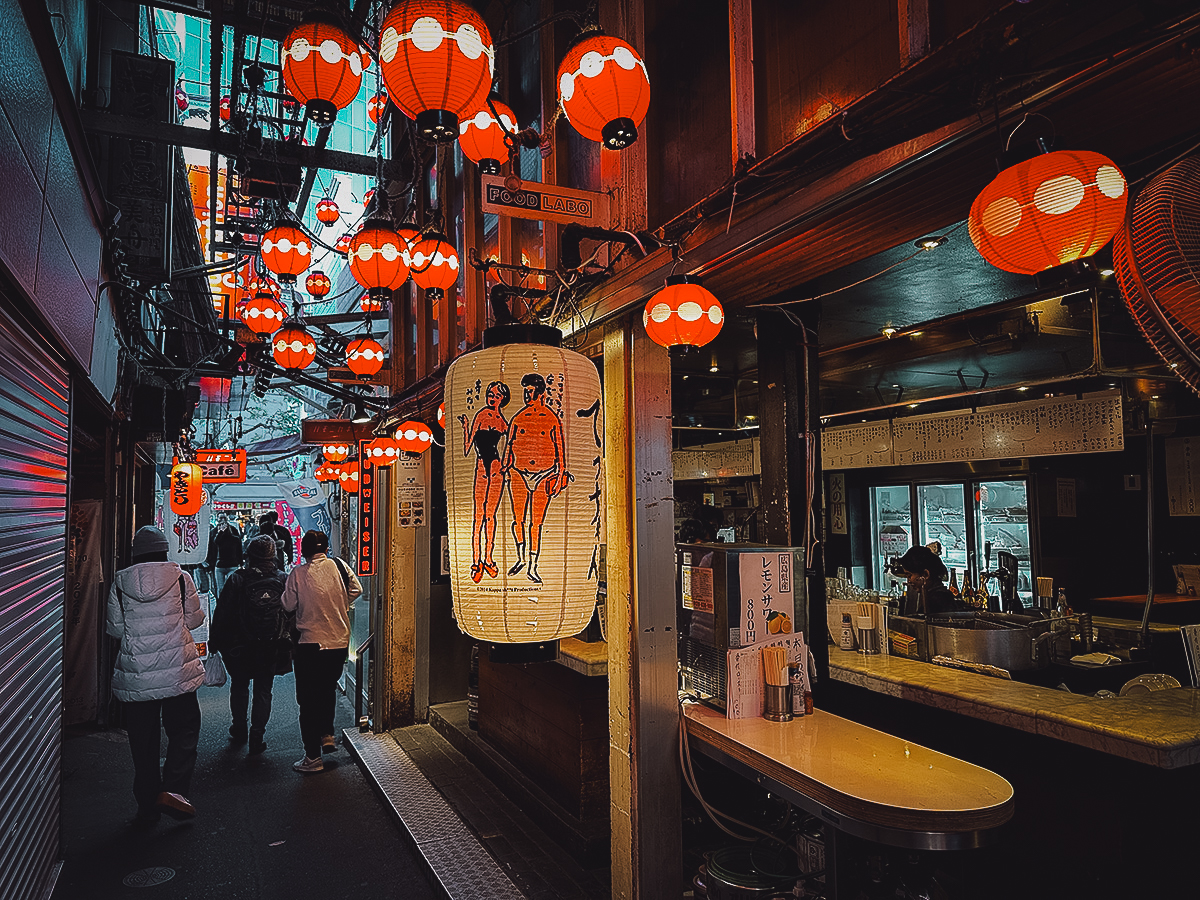
Jiyugaoka
Jiyugaoka, often called Tokyo’s “Little Europe”, is a chic upscale neighborhood located just south of Shibuya. Known for its stylish boutiques and artisanal dessert shops, its tree-lined streets and European vibe make it feel like a quaint village tucked away in a Tokyo suburb.
Jiyugaoka is a haven for cafe lovers and dessert enthusiasts, with numerous patisseries and tea shops offering beautifully crafted sweets. Boutique shopping is a highlight here, with dozens of stores specializing in home goods, fashion, and handmade goods. If you’re a vegan, then a meal at Saido – Happy Cow’s top-rated restaurant in 2020 – is a must.
Despite its upscale charm, the Jiyugaoka neighborhood is relaxed and unpretentious, making it an ideal backdrop for a leisurely day of strolling, shopping, and indulging in delicious sweet treats.
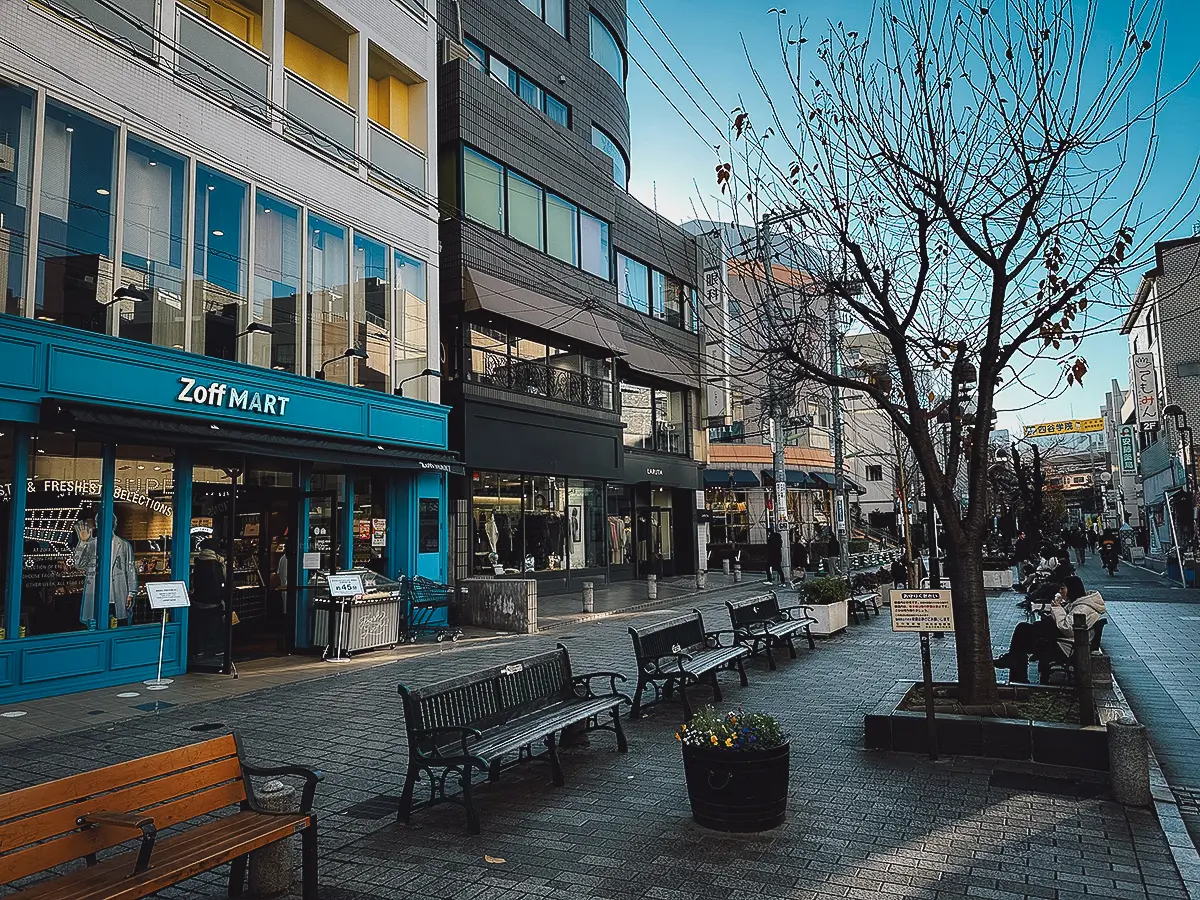
THE FINAL SAY
Tokyo is one of the biggest and most exciting cities in the world. You’re never too far from someplace interesting and it always feels like there’s something cool happening somewhere in the city, no matter what time of the day it is. With so much to see and do here, this list will undoubtedly evolve and grow over time.
Tokyo has an expansive and highly efficient public transportation system so it’s a good idea to get a Suica Card or a Tokyo Subway Ticket to help you get around. And be sure to wear comfortable shoes because you’ll be doing a LOT of walking in Tokyo.
Disclosure
Some of the links in this article on Tokyo’s coolest neighborhoods are affiliate links, meaning we’ll make a small commission if you make a booking at no extra cost to you. As always, we only recommend products and services that we use ourselves and can personally vouch for. We really appreciate your support as this helps us make more of these free travel guides. Arigato gozaimasu!

